With this section on our website we are aiming to introduce the many possibilities and opportunities Mongolia can offer despite all the negative light shed lately through the international media.
The focus will be given on the businesses run both by Mongolians and foreigners in Mongolia, on their success stories, challenges and what are their aspirations.
 Today's guest of our Mongol Mind section is designer of Khariin Khurim Salon /Love Wedding Salon/ B.Uugantsetseg. Jointly with designer E.Tuul and artist D.Narantsetseg they have launched completely new collection in view of upcoming Naadam Festival. By completely new we mean the designs incorporating latest fashion trends with blend of traditional Mongolian garment details and printed silk with images of Great Mongolian Queens.
Today's guest of our Mongol Mind section is designer of Khariin Khurim Salon /Love Wedding Salon/ B.Uugantsetseg. Jointly with designer E.Tuul and artist D.Narantsetseg they have launched completely new collection in view of upcoming Naadam Festival. By completely new we mean the designs incorporating latest fashion trends with blend of traditional Mongolian garment details and printed silk with images of Great Mongolian Queens.
How many years the salon is operating?
It has been already 9 years since the Khairiin Khurim Salon opened its doors to our clients. It is our anniversary on June 28th. As of me I am working as a designer for 15 years since I have graduated in 2002.
Why you named the salon as Khairiin Khurim /Love Wedding/?
First we thought of doing good quality and nice wedding gowns, as there were not many places where brides could go back in 2006. It was almost impossible to find a place where brides could get what they really wanted and what they have been dreaming all their lives. So we decided to focus more on wedding gowns and we came up with the names like wedding, love and etc. Then we just put together Love and Wedding into Love Wedding.
Have you ever counted how many brides you dressed up?
I always get asked on this. There were so many of them so I just lost my count. We do so many garments, gowns and everyday clothes for everyone who approaches and chooses us. So it is now impossible to come up with the exact number.
SOME WOULD QUESTION IF IT IS APPROPRIATE TO SIT ON QUEEN
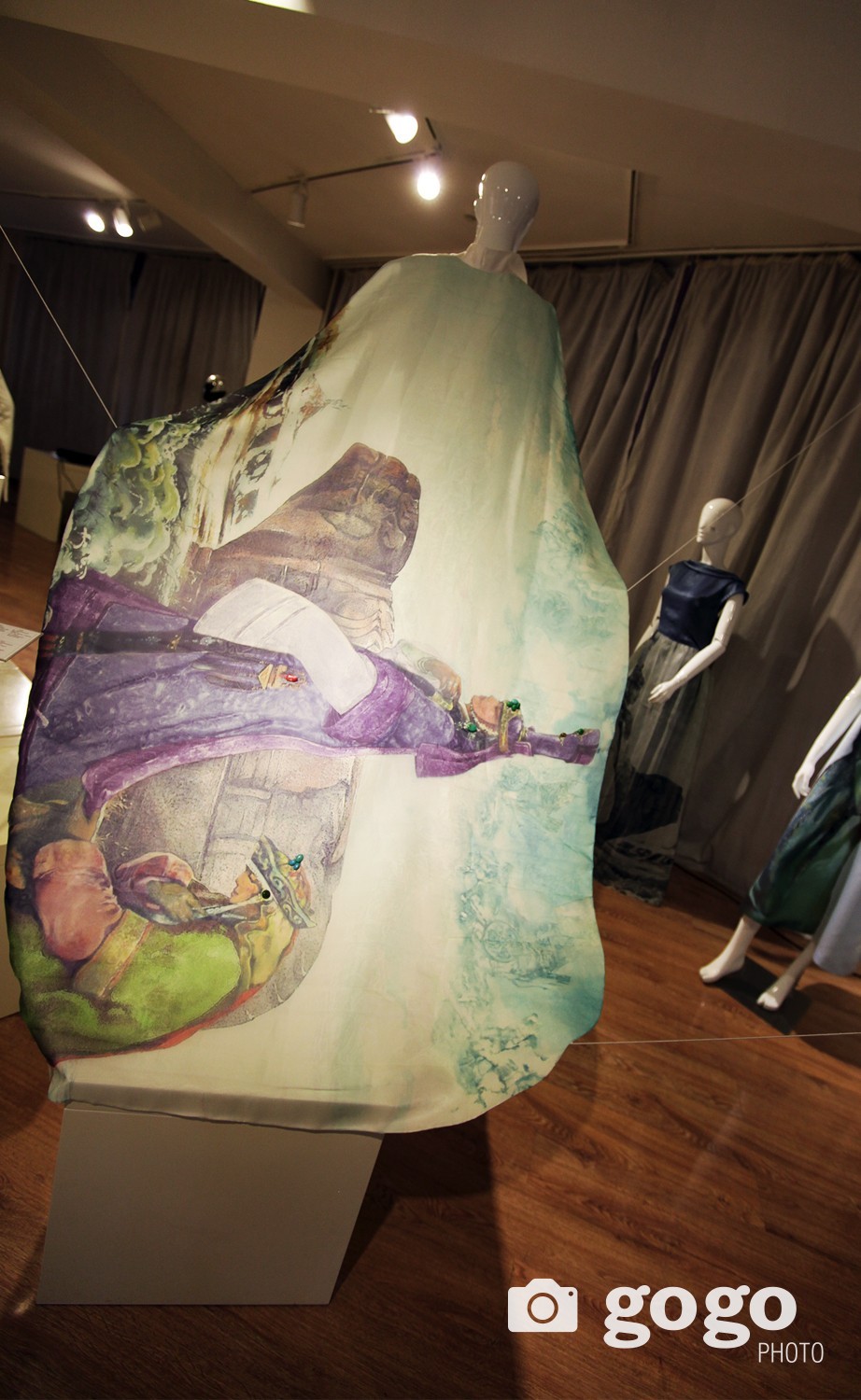 Among your clients you have many public figures and politicians how did you attracted them?
Among your clients you have many public figures and politicians how did you attracted them?
Before opening this salon I have been working for the Goyol Salon, which was owned by a Korean owner and was one of the best ateliers in Mongolia back then. There I have spent 4-5 years learning from foreign designers and improving my skills and techniques. As that salon was the best in town many public figures and politicians were frequent clients. Unfortunately Goyol salon is not operating anymore. Then we, by we I mean E.Tuul and me, have decided to open up this salon together and that is how we ‘inherited’ our loyal customers.
Every year during Naadam Festival works of Khairiin Khurim salon is on ‘display’ at the opening ceremony as many guests are wearing your collections, which again states how your loyal clients are always returning to you. What is the secret of keeping them coming back?
Personally I am more focusing on the how the clothing is designed and crafted. Here we work closely on every piece of clothing with the client, on what is desired by the client, how one wishes it to be done and with what kind of texture.
On our end we are advising with design and help with choice of the texture to be applied to that specific design. Afterwards, we pay huge attention on the craftsmanship of each and every piece that is being crafted in this salon. My principle is to serve the client with as much attention to detail as one should be served and make sure that the customer is satisfied with our job. And of course with years of what we have learned here, we are still improving our skills and techniques.
The collection displayed here is made with very fine fabrics, which is hard to find in Mongolia. How did you solve this problem?
That is the exact problem we designers face every day. Every designer would say that, because Mongolia is not a manufacturer of the textile, except cashmere, or even one button or zipper that goes into creation of the whole outfit. While the outfit is not only the fabric used it is also an incorporation of whole lot more details, while one could only see the fabric as the main constituent. Due to the shortage of textures and fabrics available in Mongolia designers are very limited with what they can create.
For this specific collection we have researched for long for silk manufacturers in China, as the traditional fabrics used for crafting Deel is very tough and not suitable in summer for Naadam festivities. We have approached the oldest silk producer in China, which only specializes in fine silk. Silk used for the collection is 100 percent fine silk, which enabled our collections to be very light in texture and more comfortable to wear in summer.
OUR QUEEN HAS YELLOW LIPS
How about the idea of this collection? Why Mongolian Queens?
Tuul and I were talking about creating Mongol costume inspired collection and the initial idea was to use silk with prints on it. In search for the picture to be printed on the material we visited art galleries and studios of artists. After long search we have agreed that our collection should have images of Great Mongolian Queens and nothing more will fit perfectly into the idea of the whole collection.
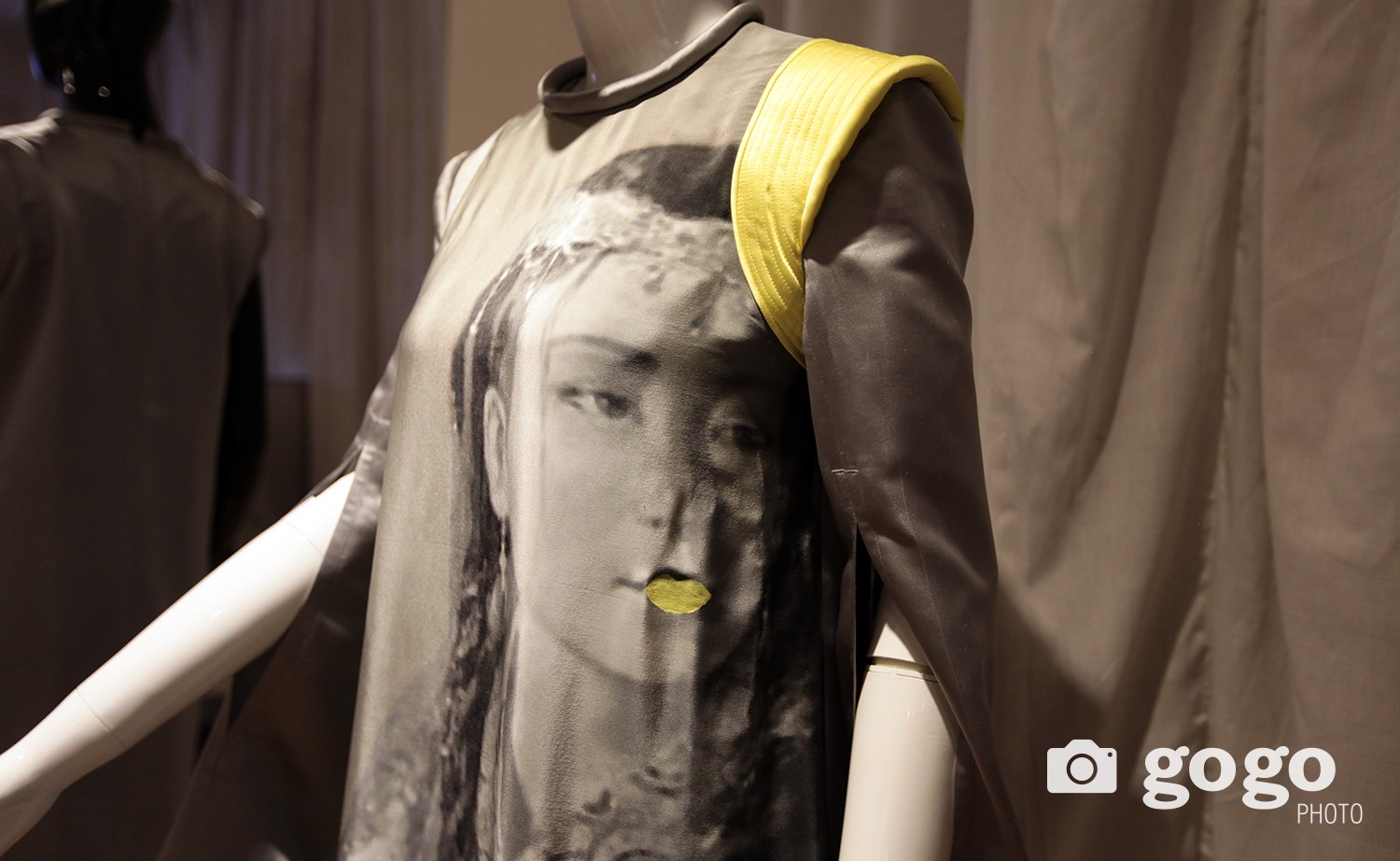 In this regard, we contacted talented artist D.Narantsetseg specializes in depicting images of famous Mongolian queens. So after discussion we have chosen to use works ‘Borte’, ‘Mandukhai’, ‘Esui’ and ‘Domog’ /Legend/ from numerous of her works.
In this regard, we contacted talented artist D.Narantsetseg specializes in depicting images of famous Mongolian queens. So after discussion we have chosen to use works ‘Borte’, ‘Mandukhai’, ‘Esui’ and ‘Domog’ /Legend/ from numerous of her works.
So this collection is not only the sole creation of two designers, but an incorporation of fine arts by famous artist as well?
Indeed, this is very unique collection, as we wanted to deviate from the traditional making of Deel, where it uses tough silk or up-right collar or even the Hunnu collar. There were some critics to say that the collection spoils the whole concept of the Deel. But we took different approach by making the Deel comfortable and chic, which will be suitable to wear as evening gown or in hot summer days during Naadam Festival.
How much time did you dedicate to this collection from the time of idea conception and until the collection was ready to display?
Initial idea of this collection was in talks since last year around this time. We worked on the idea first, and then searched for the art work to be printed on the silk, then it took time to research the silk manufacturers, contacting them and ordering the prints.
With ordering the prints it took a while to figure out the sizes of the prints as we had in mind dresses and tops, so that the prints should have been of different sizes as well. After receiving the silk we also revised our designs and made necessary changes as well.
Many might be wondering with the incorporation of the traditional Deel elements into modern silhouettes and latest trends of fashion. Which Deel parts you mostly incorporated in this collection?
As the prints on the fabric suggest, we used main elements of the Queen’s outfit, which are high shoulder elements and long sleeves. For sleeves, as it no longer serves its initial purpose we solved it to act as an additional accessory. Other parts of Deel can be seen in using the strips and stitching at shoulder and waist parts of our garments.
As of the modern trend in fashion we applied ply to give a different feel to the texture of the silk as the one we chose was very light. So we ordered different sizes of ply depending on the length of the skirts and the design of a particular dress.
With this section on our website we are aiming to introduce the many possibilities and opportunities Mongolia can offer despite all the negative light shed lately through the international media.
The focus will be given on the businesses run both by Mongolians and foreigners in Mongolia, on their success stories, challenges and what are their aspirations.
 Today's guest of our Mongol Mind section is designer of Khariin Khurim Salon /Love Wedding Salon/ B.Uugantsetseg. Jointly with designer E.Tuul and artist D.Narantsetseg they have launched completely new collection in view of upcoming Naadam Festival. By completely new we mean the designs incorporating latest fashion trends with blend of traditional Mongolian garment details and printed silk with images of Great Mongolian Queens.
Today's guest of our Mongol Mind section is designer of Khariin Khurim Salon /Love Wedding Salon/ B.Uugantsetseg. Jointly with designer E.Tuul and artist D.Narantsetseg they have launched completely new collection in view of upcoming Naadam Festival. By completely new we mean the designs incorporating latest fashion trends with blend of traditional Mongolian garment details and printed silk with images of Great Mongolian Queens.
How many years the salon is operating?
It has been already 9 years since the Khairiin Khurim Salon opened its doors to our clients. It is our anniversary on June 28th. As of me I am working as a designer for 15 years since I have graduated in 2002.
Why you named the salon as Khairiin Khurim /Love Wedding/?
First we thought of doing good quality and nice wedding gowns, as there were not many places where brides could go back in 2006. It was almost impossible to find a place where brides could get what they really wanted and what they have been dreaming all their lives. So we decided to focus more on wedding gowns and we came up with the names like wedding, love and etc. Then we just put together Love and Wedding into Love Wedding.
Have you ever counted how many brides you dressed up?
I always get asked on this. There were so many of them so I just lost my count. We do so many garments, gowns and everyday clothes for everyone who approaches and chooses us. So it is now impossible to come up with the exact number.
SOME WOULD QUESTION IF IT IS APPROPRIATE TO SIT ON QUEEN
 Among your clients you have many public figures and politicians how did you attracted them?
Among your clients you have many public figures and politicians how did you attracted them?
Before opening this salon I have been working for the Goyol Salon, which was owned by a Korean owner and was one of the best ateliers in Mongolia back then. There I have spent 4-5 years learning from foreign designers and improving my skills and techniques. As that salon was the best in town many public figures and politicians were frequent clients. Unfortunately Goyol salon is not operating anymore. Then we, by we I mean E.Tuul and me, have decided to open up this salon together and that is how we ‘inherited’ our loyal customers.
Every year during Naadam Festival works of Khairiin Khurim salon is on ‘display’ at the opening ceremony as many guests are wearing your collections, which again states how your loyal clients are always returning to you. What is the secret of keeping them coming back?
Personally I am more focusing on the how the clothing is designed and crafted. Here we work closely on every piece of clothing with the client, on what is desired by the client, how one wishes it to be done and with what kind of texture.
On our end we are advising with design and help with choice of the texture to be applied to that specific design. Afterwards, we pay huge attention on the craftsmanship of each and every piece that is being crafted in this salon. My principle is to serve the client with as much attention to detail as one should be served and make sure that the customer is satisfied with our job. And of course with years of what we have learned here, we are still improving our skills and techniques.
The collection displayed here is made with very fine fabrics, which is hard to find in Mongolia. How did you solve this problem?
That is the exact problem we designers face every day. Every designer would say that, because Mongolia is not a manufacturer of the textile, except cashmere, or even one button or zipper that goes into creation of the whole outfit. While the outfit is not only the fabric used it is also an incorporation of whole lot more details, while one could only see the fabric as the main constituent. Due to the shortage of textures and fabrics available in Mongolia designers are very limited with what they can create.
For this specific collection we have researched for long for silk manufacturers in China, as the traditional fabrics used for crafting Deel is very tough and not suitable in summer for Naadam festivities. We have approached the oldest silk producer in China, which only specializes in fine silk. Silk used for the collection is 100 percent fine silk, which enabled our collections to be very light in texture and more comfortable to wear in summer.
OUR QUEEN HAS YELLOW LIPS
How about the idea of this collection? Why Mongolian Queens?
Tuul and I were talking about creating Mongol costume inspired collection and the initial idea was to use silk with prints on it. In search for the picture to be printed on the material we visited art galleries and studios of artists. After long search we have agreed that our collection should have images of Great Mongolian Queens and nothing more will fit perfectly into the idea of the whole collection.
 In this regard, we contacted talented artist D.Narantsetseg specializes in depicting images of famous Mongolian queens. So after discussion we have chosen to use works ‘Borte’, ‘Mandukhai’, ‘Esui’ and ‘Domog’ /Legend/ from numerous of her works.
In this regard, we contacted talented artist D.Narantsetseg specializes in depicting images of famous Mongolian queens. So after discussion we have chosen to use works ‘Borte’, ‘Mandukhai’, ‘Esui’ and ‘Domog’ /Legend/ from numerous of her works.
So this collection is not only the sole creation of two designers, but an incorporation of fine arts by famous artist as well?
Indeed, this is very unique collection, as we wanted to deviate from the traditional making of Deel, where it uses tough silk or up-right collar or even the Hunnu collar. There were some critics to say that the collection spoils the whole concept of the Deel. But we took different approach by making the Deel comfortable and chic, which will be suitable to wear as evening gown or in hot summer days during Naadam Festival.
How much time did you dedicate to this collection from the time of idea conception and until the collection was ready to display?
Initial idea of this collection was in talks since last year around this time. We worked on the idea first, and then searched for the art work to be printed on the silk, then it took time to research the silk manufacturers, contacting them and ordering the prints.
With ordering the prints it took a while to figure out the sizes of the prints as we had in mind dresses and tops, so that the prints should have been of different sizes as well. After receiving the silk we also revised our designs and made necessary changes as well.
Many might be wondering with the incorporation of the traditional Deel elements into modern silhouettes and latest trends of fashion. Which Deel parts you mostly incorporated in this collection?
As the prints on the fabric suggest, we used main elements of the Queen’s outfit, which are high shoulder elements and long sleeves. For sleeves, as it no longer serves its initial purpose we solved it to act as an additional accessory. Other parts of Deel can be seen in using the strips and stitching at shoulder and waist parts of our garments.
As of the modern trend in fashion we applied ply to give a different feel to the texture of the silk as the one we chose was very light. So we ordered different sizes of ply depending on the length of the skirts and the design of a particular dress.

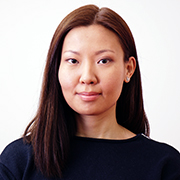
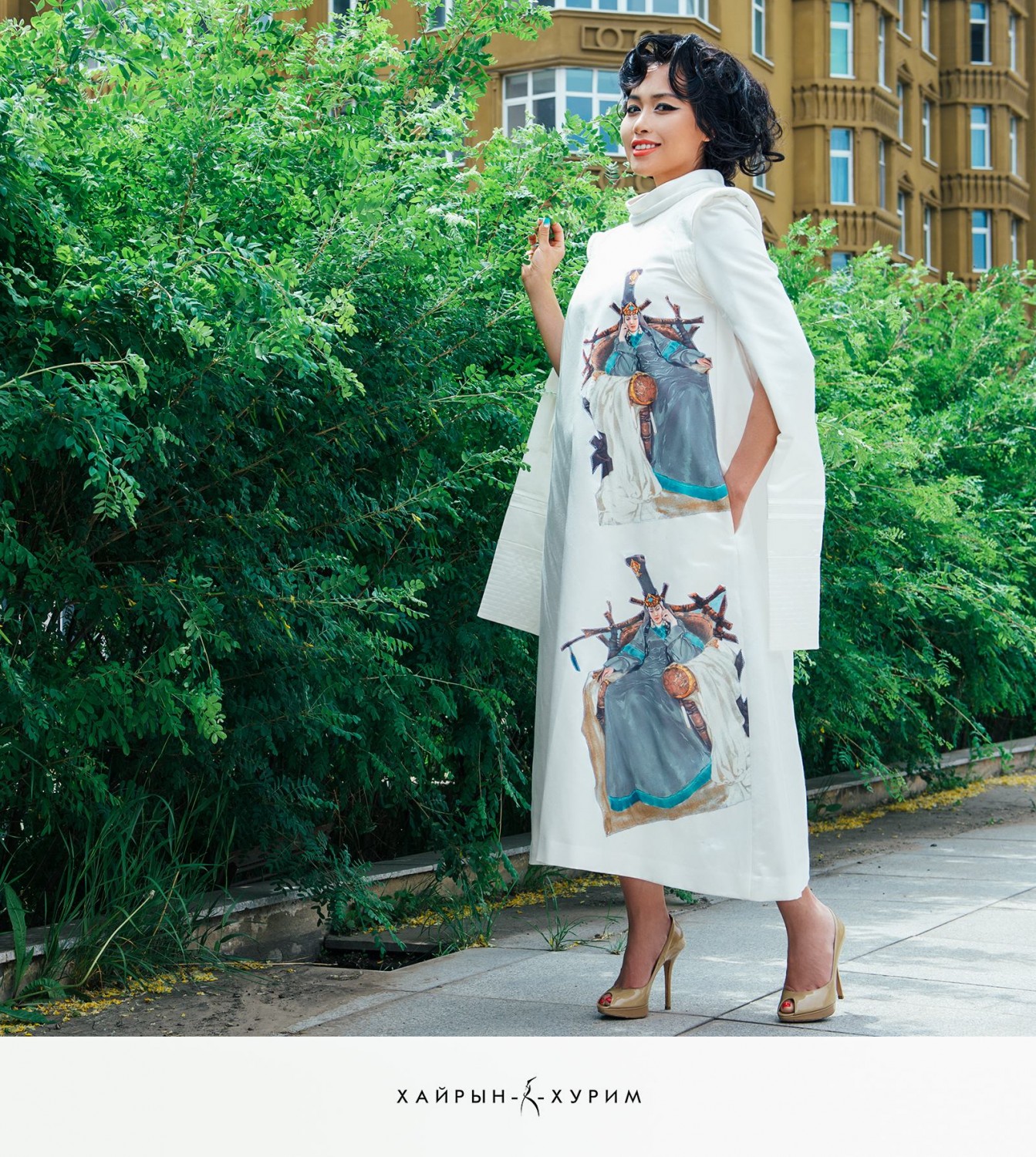
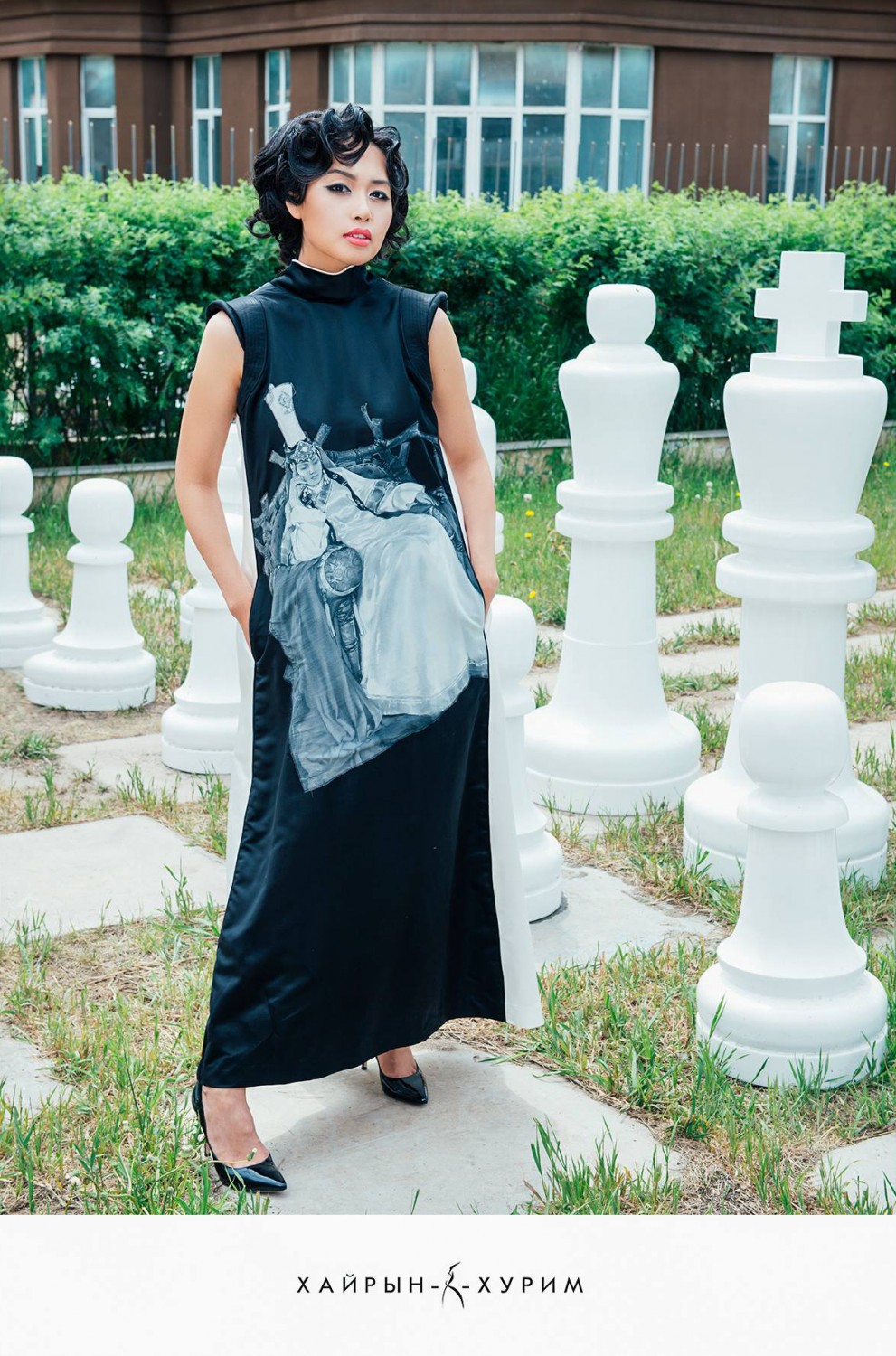
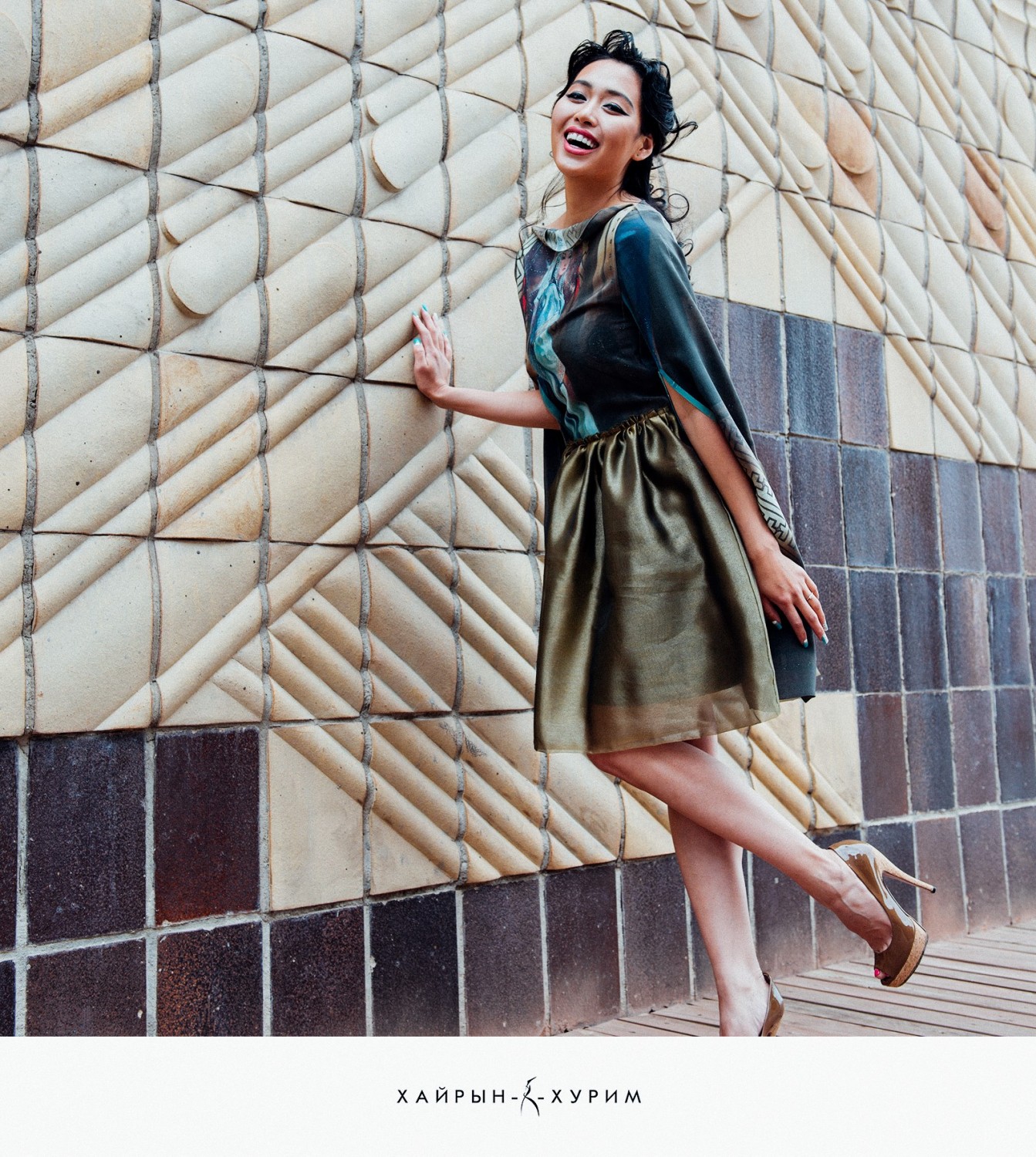
-113850-1572415079.jpeg)
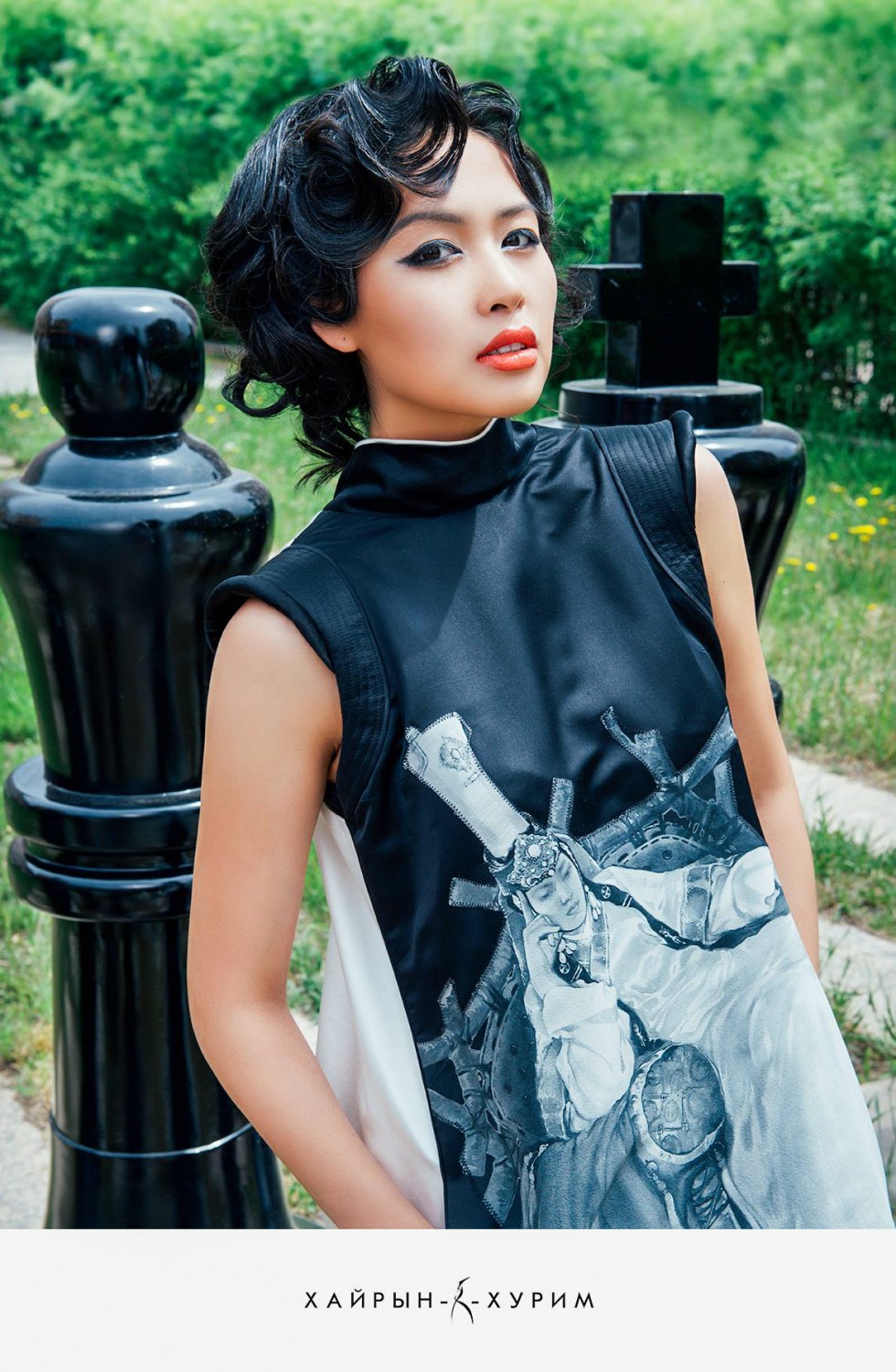
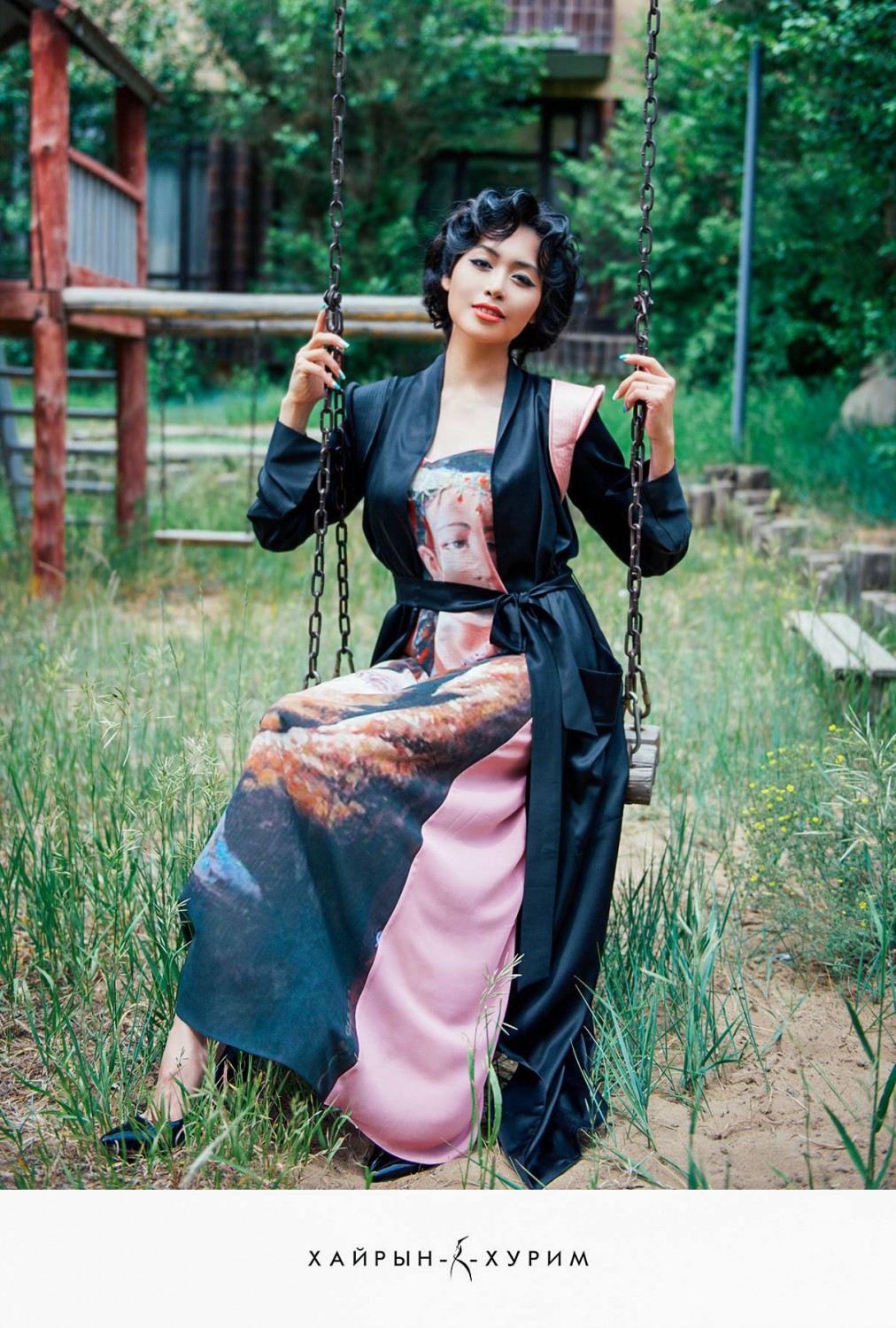
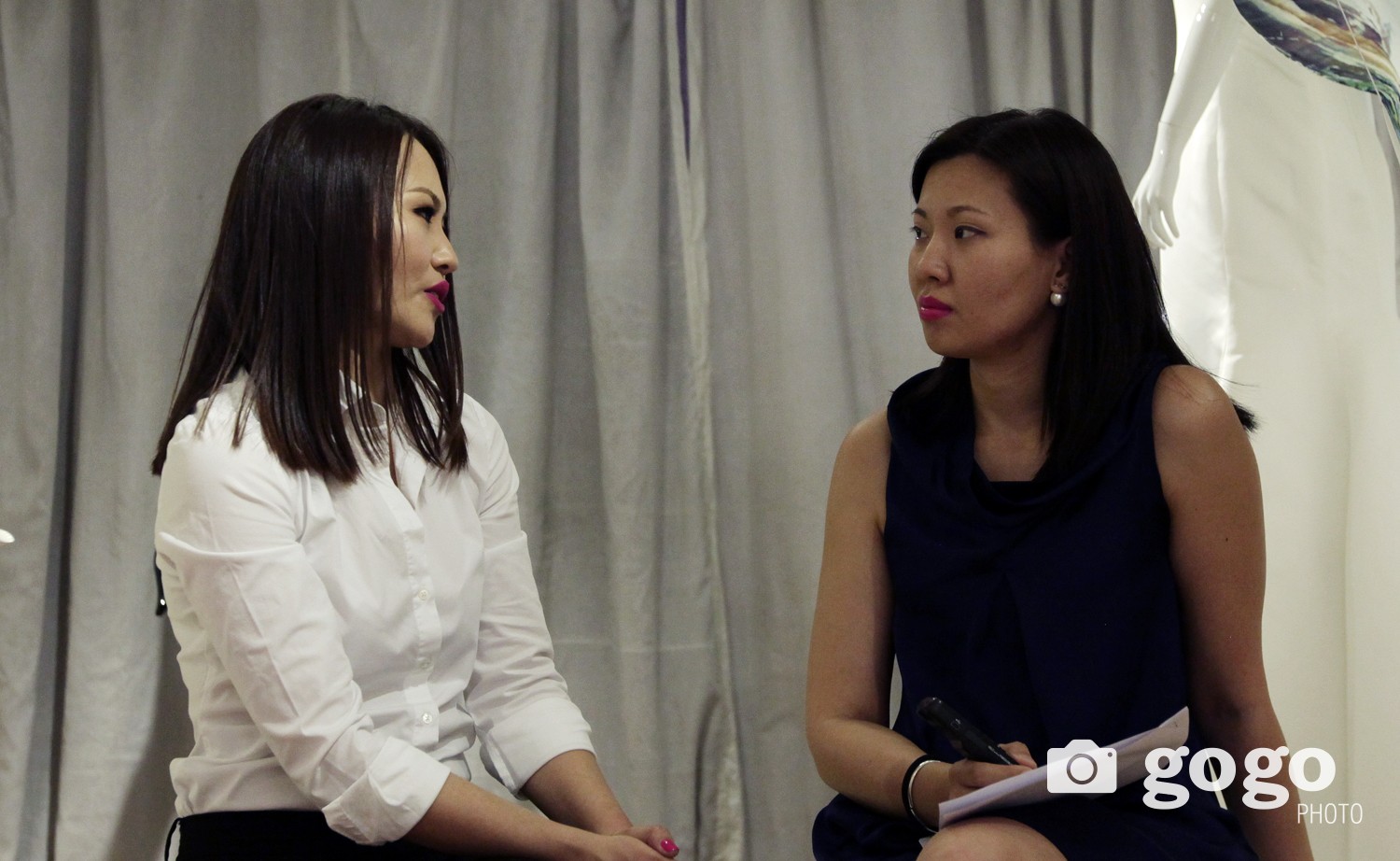 So it means this year you took completely different approach?
So it means this year you took completely different approach?